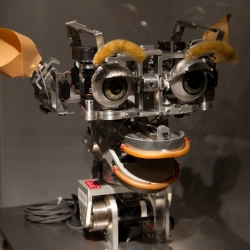
You’ve probably read somewhere recently that robots are coming to take your job. It’s true, they probably are. But they’ve got some growing up to do first, says Rob Nail, CEO and associate founder of Singularity University. Nail knows robots. He ran his own automation and robotics firm, Velocity11, before it was acquired.
While things have moved ahead since then, one robotics rule hasn’t changed, the hard things are still easy, and the easy things are hard. Speaking at Summit Europe, Nail showed participants select footage from last December’s DARPA Robotics Challenge trials. Even he, a robotics fan, admits it’s terribly boring.
The bots perform tasks most of us do without thinking, opening a door, turning a valve, climbing stairs. They bumble through each mission at such an agonizingly slow pace, playback has to be sped up to make it bearable. There are many fails. And this is the cutting edge. Nail drew an analogy to his young son, who is just now learning to open doors, climb stairs, navigate debris, and disturbingly, put the car into gear. But he’s a little slow, clunky, and likewise fails often.
Today’s most advanced robots are still toddlers. But Nail doesn’t expect that to last long. A few underlying drivers are pushing their development forward. Sensors are cheap, pervasive, and embeddable. Using sensors to measure motion, orientation, and location and cameras to see their immediate surroundings, robots can balance, navigate, and differentiate and manipulate objects.
Further, it’s getting easier to program them to do all these things. Not long ago, it took advanced degrees and experience writing machine code to program robots. Now a kid at home or in the classroom can do it. As these trends reduce barriers to entry and cost, more people are developing robots, and increasingly, more people can afford to buy them.
